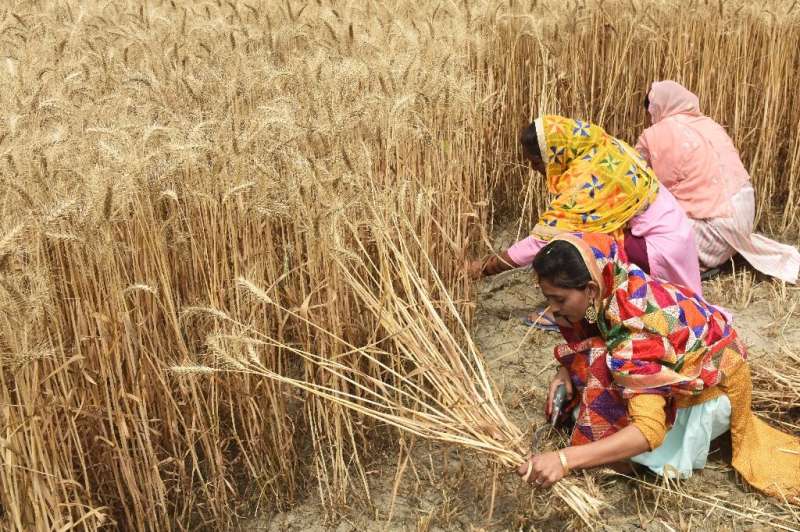
The latest assessment by risk company Verisk Maplecroft brings those two threats together to calculate that heat stress already poses an “extreme risk” to agriculture in 20 countries, including agricultural giant India.
But the coming decades are expected to expand the threat to 64 nations by 2045—representing 71% of current global food production—including major economies China, India, Brazil and the United States.
“With the rise in global temperatures and rise in global heat stress, we’re going to see crops in more temperate countries as well start being affected by this,” said Will Nichols, head of climate and resilience at Verisk Maplecroft.
Rice is particularly at risk, the assessment said, with other crops like cocoa and even tomatoes also singled out as of concern.
Maplecroft’s new heat stress dataset is based on a worst-case emissions scenario leading to around 2˚C of warming above pre-industrial levels by 2045.
The authors stress that in projections to mid-century, even scenarios that assume higher levels of carbon-cutting action could still result in temperatures nearing 2˚C.
India—responsible for 12% of global food production in 2020 and heavily reliant on outdoor labour productivity—is already rated as at extreme risk, the only major agricultural nation in that category at current temperatures.
Nine of the top ten countries affected in 2045 are in Africa, with the world’s second largest cocoa producer Ghana, as well as Togo and Central African Republic receiving the worst possible risk score.
The top 20 at-risk countries in the coming decades include key Southeast Asian rice exporters Cambodia, Thailand and Vietnam, noting that rice farmers in central Vietnam have already taken to working at night to avoid the high temperatures.
“I think what it reinforces is that, even though a lot of us are sort of sitting in sort of Western countries, where we might think we’re a bit more insulated from some of these threats, actually we are not necessarily,” Nichols said.
“Both in terms of the sort of physical risks that we’re facing, but also in terms of the kind of knock on effects down the supply chain.”